This is (not) a drill
An interactive installation displaying the change of the polar ice cap over the last 40 years.
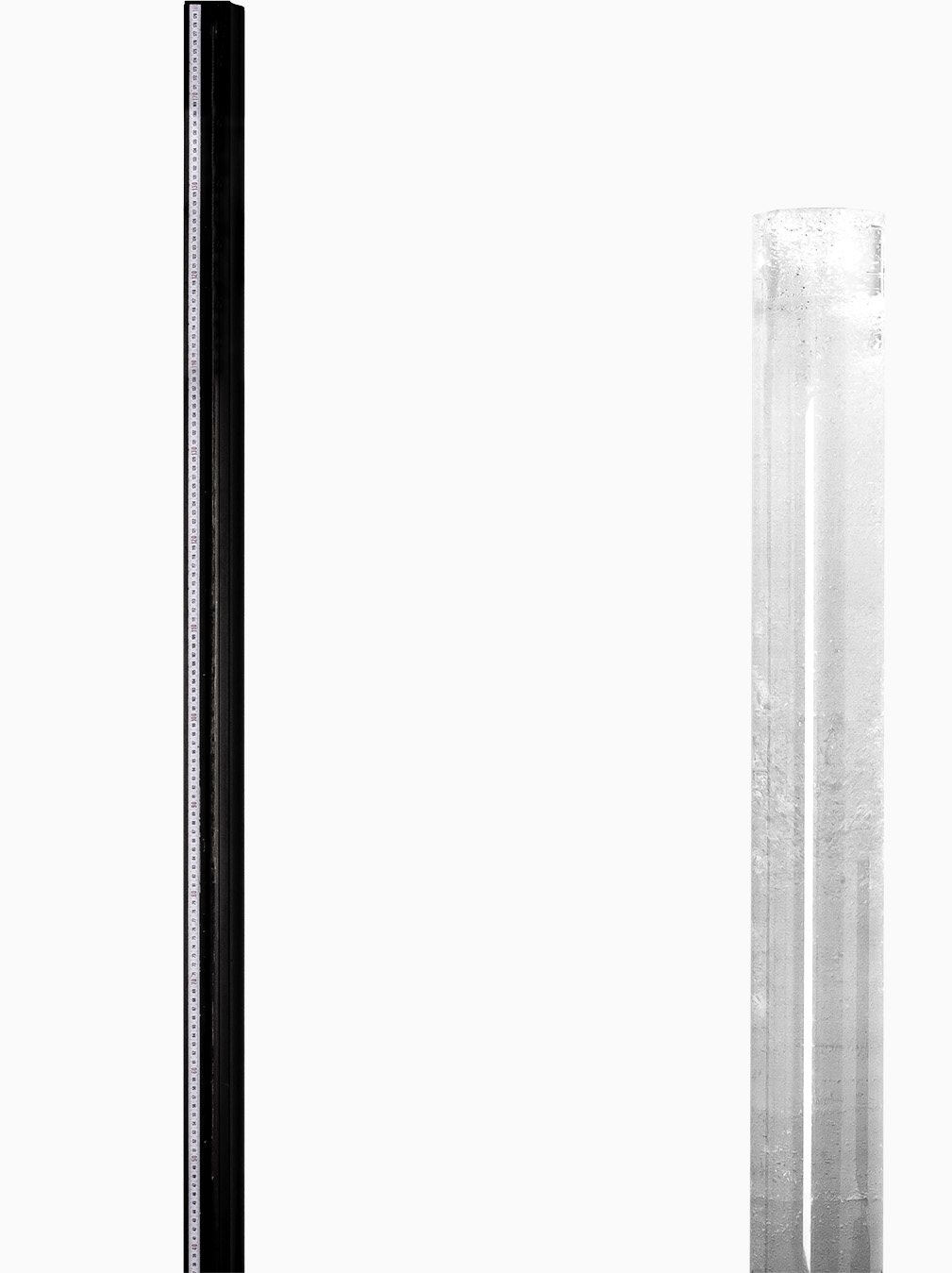

Overview
This is (not) a drill is an interactive installation, designed to give amateurs an interface to complex satellite data of the shrinking polar ice cap. Users can shine light through a 1.8-meter tall sculpture of an ice core. A wireless mouse detects the vertical movement of the arm and sends the input to a hidden laptop, connected to the monitor. Moving the arm and the lamp closer to the top of the ice core will show data from recent years while moving the arm down takes users back in time.
The sculpture is motivated by real ice cores which are drilled out of arctic ice or glaciers to inspect gases or other materials trapped in them. By shining light through them, these materials become apparent and tell a chronological story about the evolving climate. The ice core is the main visual metaphor and shapes an emotional and logical connection between the user and the data. Sharing neutral data without manipulating the message was the main focus of this project.
This is (not) a drill tries to be an answer to the question of how design and art could be used to transfer scientific information in a time of disinformation and bias-driven acting.
Installation
1 Wireless Mouse
The optical sensor of the hidden mouse detects movement of the arm and sends the input to the computer.
2 Movable Arm
The arm of the tripod is the primary human-machine interface. The user can move it up or down to move forwards or backwards in time and see the ice cap changing over the past decades.
3 Computer
The input from the mouse is being processed by a hidden laptop where a Java program renders the images and sends the output to the monitor.
4 Monitor
Upon moving the arm the monitor shows the user the corresponding year and extent of the ice cap.
5 Ice Core Sculpture
30 liters of molten candle gel were poured in a 1.8-meter tall plexiglass cylinder. The sculpture looks identical to real ice cores used in scientific research for climate change.
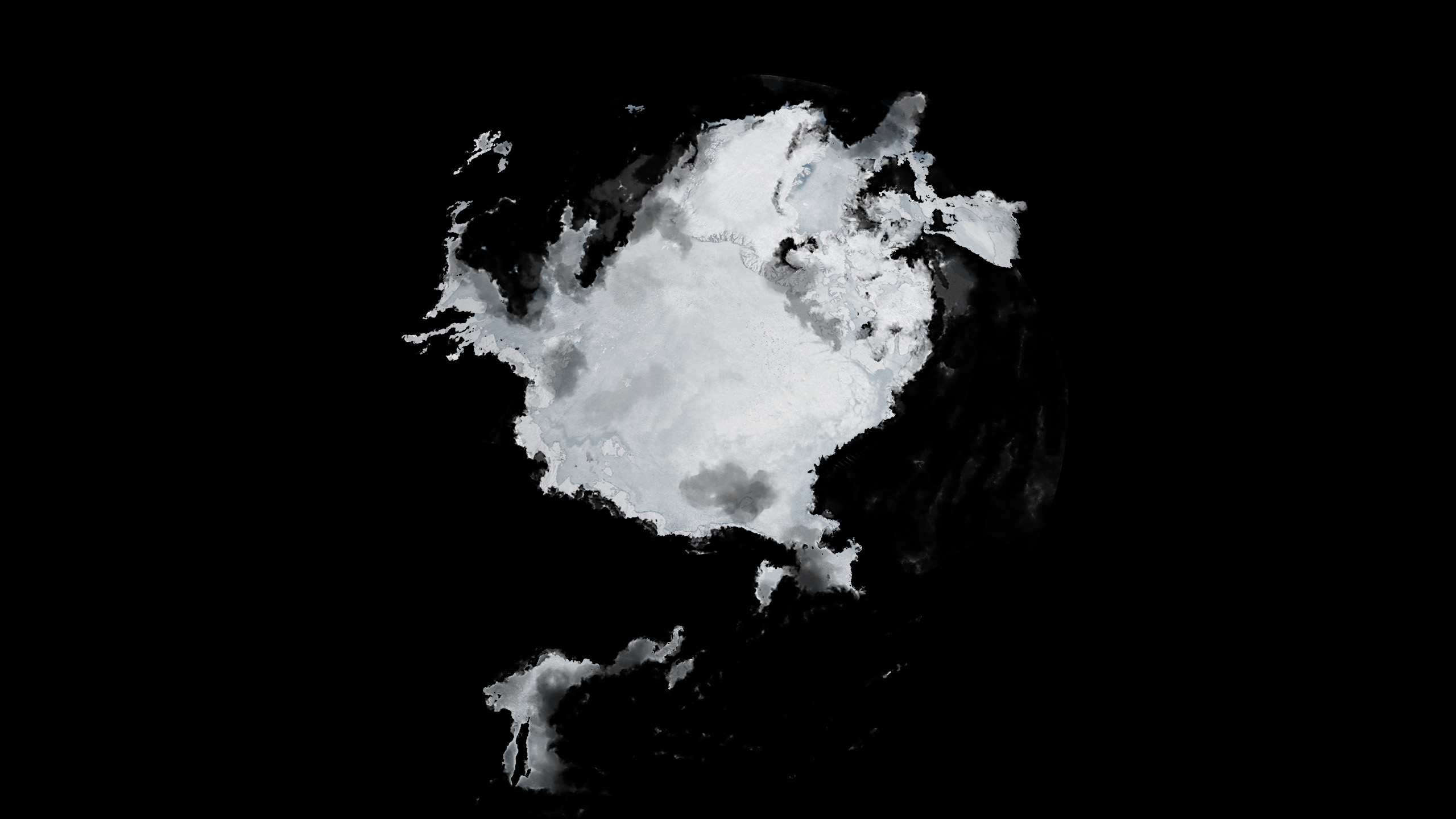
Method
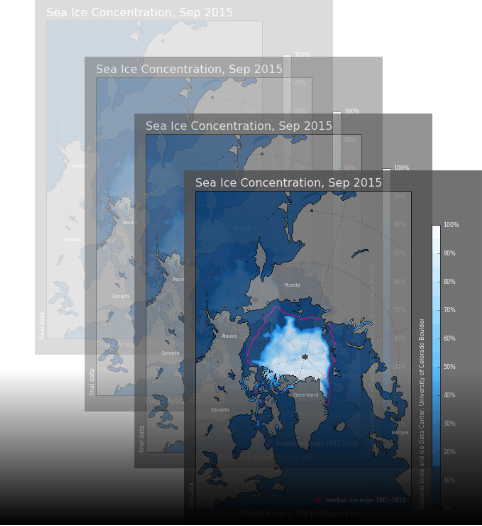
Source
Satellite Data from NASA and NSIDC, provided by the University of Colorado, are crawled and sorted. Thousands of maps from 1979 to 2019 show the extent and density of the north polar ice cap.
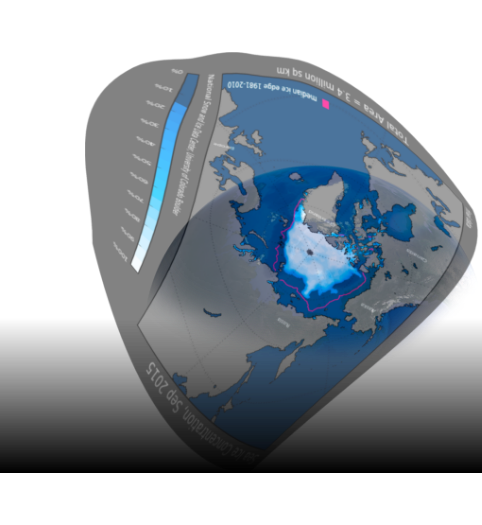
Mapping
The data is projected to a globe as accurately as possible. Reducing the opacity allows a precise tracking of the borders.
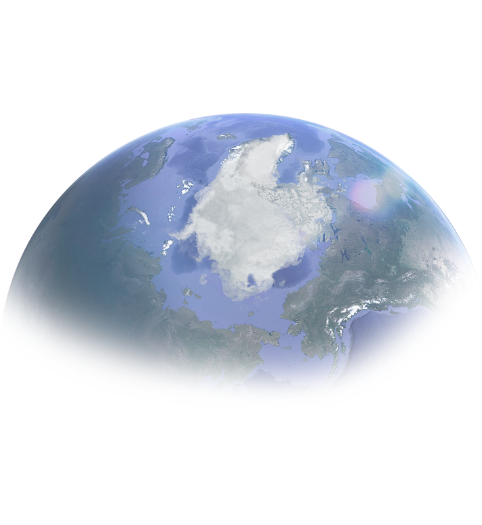
Illustration
The map is being digitally retouched to give it a photorealistic look. Besides the the ice cap's extent, its density is visible as well thanks to varying opacity levels. The accuracy of the borders in the final image is <Δ300km compared to the original data.